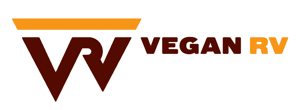How we get internet access in our RV
We’ve been unsuccessful at logging into Pokemon Go today, so I decided to post about our internet setup and how we get internet access in the RV.
Internet Access – Not Optional
Well, seeing that both of us depend on our computers for income, we have a DIRE need for good cellular signal and speeds. Without internet access, the two of us basically become useless to the world. We already stayed somewhere that we couldn’t get any internet access at the campsite, Bahia Honda. So we needed to get a solution in place.
After watching countless videos on others setups, going through the information at RVMobileInternet.com and then speaking with Taylor and Beth over at TheLearningBanks.com… I ended up going in a different direction than any of them had recommended. Leave it up to a nerd to do some sh*t like that.
And the winning router is…
In the end, we decided on the MofiWireless MOFI4500-4GXELTE-SIM4 from mofinetworks.com.
So far it’s been perfect for us, we are able to swap our both of our unlimited AT&T and Verizon sims without issue (so far, knock on wood).

Blah, blah, blah – here comes the nerd talk
Mofi is based on the OpenWRT platform. Most of my routers at home and business are based on OpenWRT, so I knew what I was in for. Surprisingly it was a lot more point and click than I imagined it would be. Also, solid as a rock so far, my only hiccup has been during an online firmware upgrade that failed and I had to do manually.
Switching between our two SIMs has been a breeze, as there is an auto option on the router. Though if you want to squeeze every last bit of data out of this router you will have to do some manual tweaking. With that said, you don’t have to take the SIM from you device out, as long as you can USB tether from your phone, you can connect it to the router… still leaving you phone available for calls.
Now for some cool points, the router will aggregate multiple 4G bands together to give you better speeds on your connection. The MofiWireless MOFI4500-4GXELTE-SIM4 supports LTE bands B1, B2, B4, B5, B7, B8, B12 & B38. FYI… band 12 (for T-Mobile), customers using the new 700Mhz frequency will get the best performance.
Boosters, for those hard to reach spots
Now that we have had some time with the router, we have made an upgrade to just the base router and antennas to help out with internet access when we are in the middle of nowhere. We purchased two of the Wilson weBoost Signal 4G M2M Signal Booster Kits from Wilson Amplifiers (link gets you $10 off $100 purchase).
These antenna amplifiers sit in-between the router’s antenna ports and the antenna, giving us up to a +15db gain on our connection. In non-tech speak, that is the difference between having only 3G and 4G OR 1 bar of 4G and having 3 bars of 4G OR hell, no signal to some signal. More is better.
The whole setup is still pretty rigged in our RV at the moment. 🙂 All of the equipment just sits on our dash with the antennas in each corner of the windshield, either plugged into the inverter when we are dry camping or in the wall when we are on shore power. Eventually, we will have all of the cables properly run and the antennas on the roof. For now, it works and doesn’t look too bad.
The nerdiness goes to 11
Now for some REAL NERD INFO on the router:
Here is a list of some of the “bonus” features of the router:
- Ability to assign a static public IP address
- Android & iPhone USB Tethering Compatible (Plug in your Android phone via USB port to enable USB Tethering)
- Up to 7 Unique SSID/Networks with full control including Guest accounts
- MOFI Ad Blocker/Parental control built in to prevent annoying pop-ups and increase the speed of your online experience.
- Virtual Private Network (VPN) + OPENSWAN IPSec and OpenVPN Support
- Multi-Wan with fail safe (if one connection fails, can set to auto connect to another)
- WiFi Fail Over (great for anyone that gets free wifi and only use 4G/LTE when not in range) NOTE: I haven’t used this feature
- Fail Safe Boot Loader than can restore router on bad flash or failed firmware update
- USB/Hard Drive/Micro USB Storage Server to share your files over the network
- USB Print Server to allow a regular USB inkjet printer become a network printer
- Full Advance Quality of Service (QOS Support)
- Detachable 7 inch 5dBi antennas allowing flexible gain performance antennas both wifi and 4G/LTE
- Dynamic DNS full support including customized option
- True DMZ not Pseudo DMZ Zone
- True IP-Pass-Through
- VPN Services & Termination
- Standalone VPN & DHCP Server
Internal Module Specs:
- LTE Category 6: 300Mbps DL, 50Mbps UL
- HSPA+: 42Mbps DL, 5.76 UL
- TD-HSDPA/HSUPA: 2.8Mbps DL, 2.2Mbps UL
- EDGE: Multi Slot Class 12 236.8 kbps DL & UL
- GPRS: Multi Slot Class 10 85.6 kbps DL & UL
Frequency Bands:
- LTE Band B1 (2100MHz)
- LTE Band B2 (1900MHz)
- LTE Band B3 (1800MHz)
- LTE Band B4 – AWS (1700MHz)
- LTE Band B5 (850MHz)
- LTE Band B7 (2600MHz)
- LTE Band B8 (900MHz)
- LTE Band B12 (700MHz)
- LTE Band B13 (700MHz)
- LTE Band B17 (700MHz)
- LTE Band B20 (800MHz)
- LTE Band B25 (1900MHz)
- LTE Band B26 (850MHz)
- LTE Band B29 (700MHz)
- LTE Band B30 (2300MHz)
- LTE Band B41 (TD 2500MHz)
WCDMA Bands
- B1, B2, B3, B4, B5, B8
- UMTS (850/900/1700/1900/2100 MHz)
- GSM/GPRS/EDGE (850/900/1800/1900 MHz)
Even the car has a booster!
We do have one more piece of equipment in our arsenal. For the times when you and your RV are in the best, most beautiful spot ever and there are ZERO bars (sometimes it’s good to disconnect, I mean you will have to talk to your partner…. ugh), we have a booster/amplifier for our car.
We purchased the Wilson weBoost Drive 4G-X Cell Phone Booster Kit from Wilson Amplifiers. This is device amplifies the cellular signal to devices in the car (up to 4 device connections), then we just wifi tether to one of our phones for internet access. That way we can drive towards connectivity without having to move the RV or get real close to civilization. The in-car amplifier also serves a dual purpose, we can scope out connectivity on our site scouting runs.
And sometimes all this isn’t enough

Yes, there are places where you will have all this technology set up and you still can’t get internet access. Recently this happened to us on a mountain in Vermont. We drove to town, worked in a coffee shop, and moved house as soon as we could.
If you’re thinking about hitting the road and have questions about our set up, leave a comment. We’d love to hear from you!
